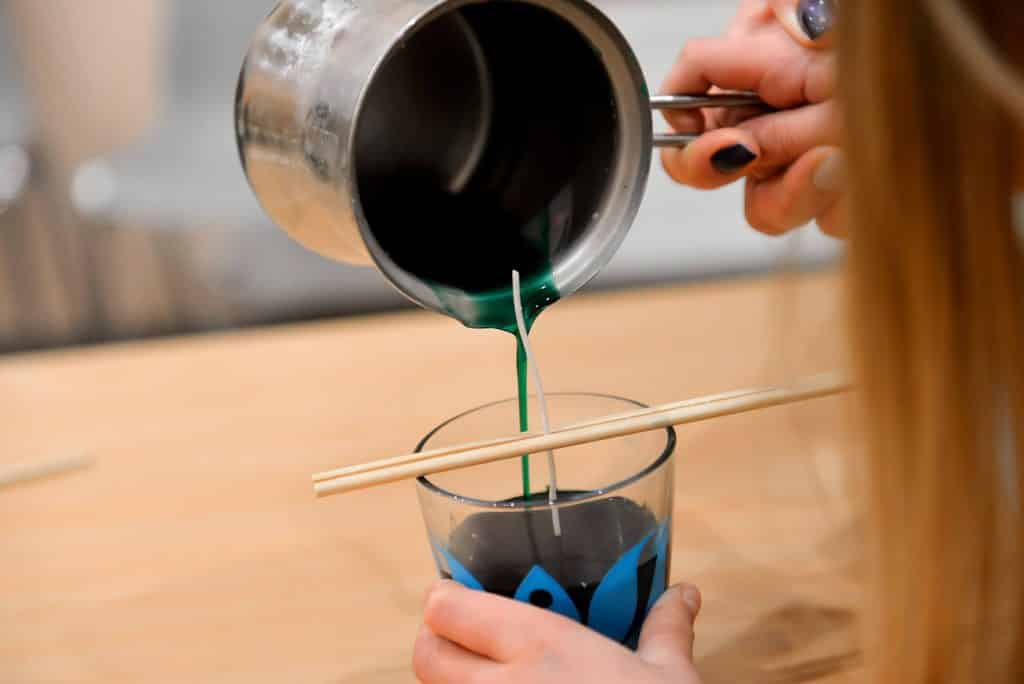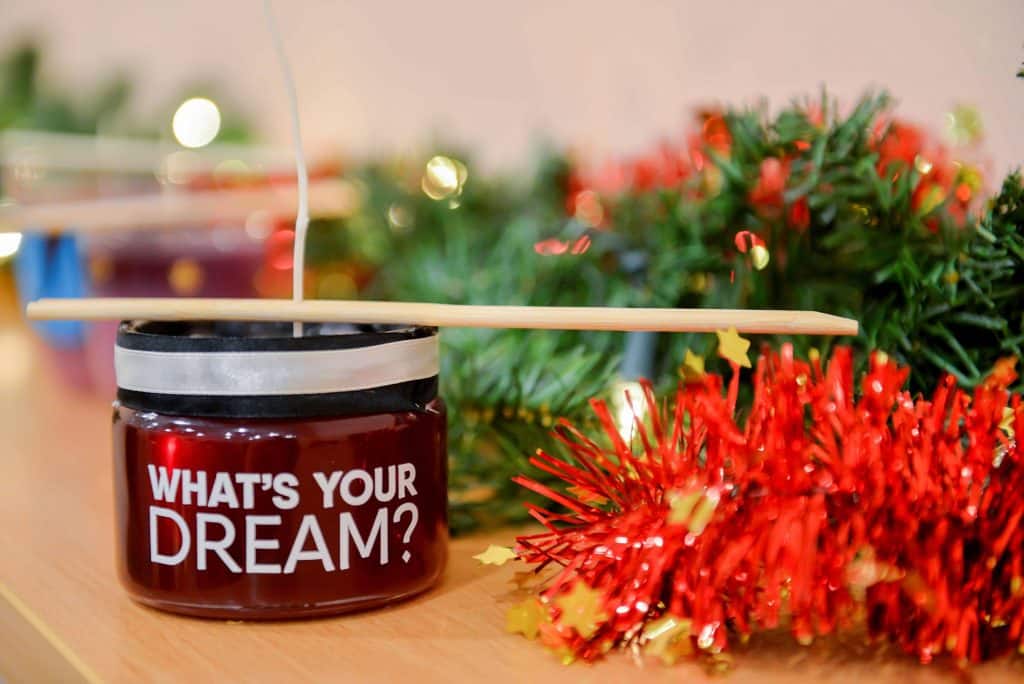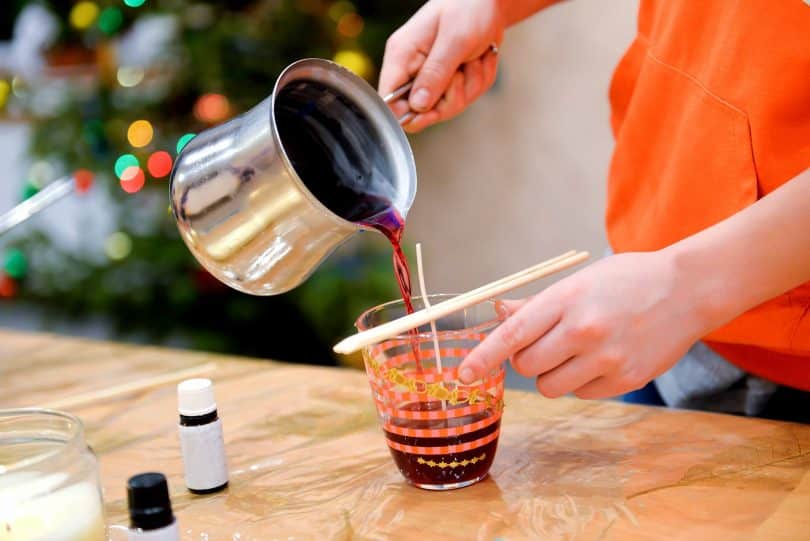Anyone who has tried making the switch to “all-natural” candles, knows exactly how difficult it can be to get a good scent throw, nice appearance, and even burn with the limits we introduce to candle-making.
Take away paraffin wax, strong fragrance oils, and we’re left with things that are pretty finicky—beeswax, soft vegetable waxes, and essential oils.
So what exactly is the best wax for essential oil candles, and how can you get a great scent throw with the kinds of things that go into natural candles?
Beeswax
Beeswax is one of the best, most versatile waxes for beginner candlemakers. It’s solid enough to make pillar and taper candles, as long as you don’t introduce too many extra oils.
It also has a wonderful natural scent, which smells very lightly of honey. There’s something really comforting about burning just a natural beeswax candle, without any additional scents.
However, that same scent can be a bit overpowering when you’re working with other scents.
Things like eucalyptus, patchouli, and other very strong, earthy scents pair well with beeswax without being overpowered, but lighter floral and herbal scents can easily get lost in the natural scent of beeswax.
And while I absolutely love beeswax for candles, they don’t always burn well. Especially if you only like to burn candles for a short amount of time (30 minutes to an hour), you’ll see some tunneling issues crop up.
In order to make sure this doesn’t happen with your beeswax candles, you need to burn them long enough that the wax melts evenly, all the way to the edge.
Even if you have it in a glass container that helps trap heat, you can still get issues with the center melting much faster than the outer edges. Beeswax candles need to stay going for about 2-4 hours to get an even burn. (At least 4 hours the first time you burn it.)
Now, if you like the scent of beeswax but don’t want to burn it very long, there is a way to fix issues with tunneling.
By introducing softer materials like soy wax, palm wax, or even a bit of coconut oil or cocoa butter, you don’t have to burn it quite as long. (Adding about 1/4 cup of coconut oil to a pound of beeswax can make a nice, soft wax that keeps the wonderful natural scent of beeswax.)
This is a great kit to get started with making beeswax candles:

Soy Wax
Soy wax is a soft wax that can be a little tricky to work with. Most people end up using a soy blend that contains paraffin to help stabilize it, but that kind of defeats the purpose of trying to include natural materials in your candle!
Soy wax has a decent scent throw, but it’s hard to find essential oils that carry well. I often have to add 300 drops (basically a bottle) of essential oil to a batch of wax. If you’re making candles with the intent to sell, that’s going to really drive up your cost.
Strong woody/earthy, spicy, and very strong floral oils can have a great scent throw, but milder oils like lavender and citrus oils can fall short unless you use a high ratio of essential oil to wax. In general I stay away from citrus oils.
I’ve found that adding a bit of coconut oil (1 part oil to 3 parts wax) can create a smooth, creamy wax that smells great and clears up some of the frosting issues that candlemakers often have with soy wax.
Even adding just a tablespoon of coconut oil to a pound of soy wax can help eliminate issues with frosting, though I prefer to use the ratio above for a softer wax that carries scents a bit better.
The softer wax also allows you to add essential oils at a lower temperature, reducing the chance that the smell of the oil will change much. (Some essential oils, particularly citrus and earthy oils, can change drastically when introduced to high temperatures.)
With very soft waxes (like the 1 part coconut oil to 3 parts soy wax), you can add and mix essential oils at 140F and sometimes even a bit of a lower temperature.
In my personal experience, this soy/coconut blend is the best wax for essential oil candles.
Here is a link to my recommended soy/coconut blend:
And if you’d rather get up and running a little quicker with a soy wax candle making kit, this is a great option too:
Essential Oils and Heat
In general, I try to add essential oils at a lower temperature. However, I always suggest starting with the manufacturer’s suggestions and then testing with your own methods if they don’t turn out the way you want.
For waxes I’ve never worked with, I typically start with 180-185F (which is usually the manufacturer-recommended temperature for adding oils), then slowly work my way down to 130-140F if the scent changes or just doesn’t smell right.
It’s expensive to test with essential oils, so it’s good to test with a wax you like the natural scent of so your candles don’t go to waste! Even if they don’t turn out the way I want, friends love to get them as gifts and they often still smell nice enough.
Etsy has some of the best (and cheapest) options for quality essential oils on their essential oils marketplace to get started with.

Additional Reading
Looking to learn more about candle-making?
Candle-making is all about experimentation and finding what works best to get the scents you most love, but we’ve included some guides that include our favorite candle-making supplies, oils (both fragrance and essential oils), and waxes.
Hopefully this guide gave you a starting point for finding the best wax for essential oil candles.
Here are some other guides to help you get started with candle-making:








Thanks for the information. You refer to using a full bottle of essential oil for every batch of wax but how much is a batch?
Also, can you tell me if a 5% dilution of Frankincense essential oil in Grape seed oil would be strong enough to create a decent scent and, if so, would the quantity used be higher/the same?
I had this great idea to make Frankincense candles for family at Christmas and yet everyone seems to have different ways/recommendations and proportions. I have no idea which recipe is the best for creating 6 6oz candles with an even burn and a long lasting scent – it’s very expensive to experiment with Frankincense essential oil. I have both the 100% essential oil and the 5% dilute.
Thanks, in advance, for any advice 🙂
Hi Sarah, a full bottle of 300 drops is the 15ml bottle and a batch is one pound of wax. I have not yet experimented with using grapeseed oil in candles as it doesn’t add a lot of scent, though it does make a good body oil. And as for the dilution, I tend to go with the 100% for a stronger aroma. Sorry I can’t answer all your questions, but I hope this helps. I would love to receive homemade candles for Christmas! Good luck!